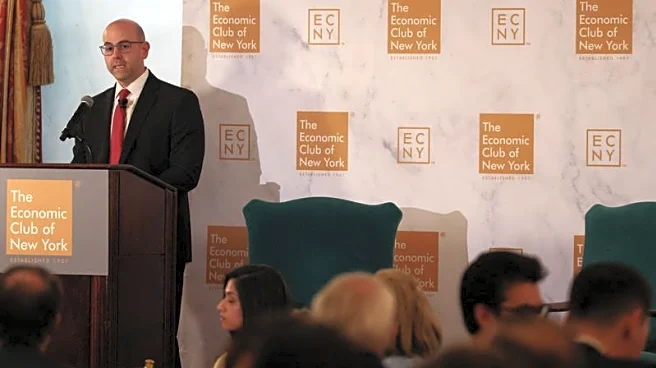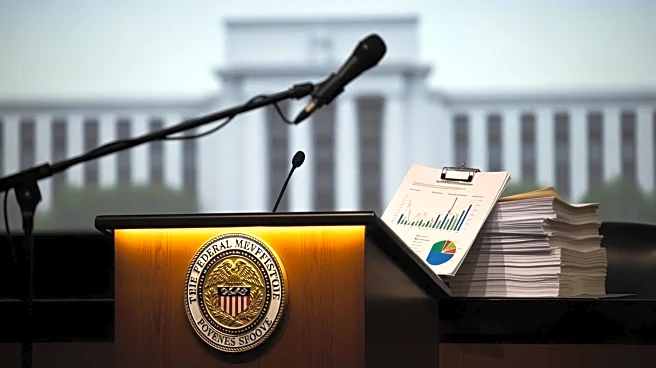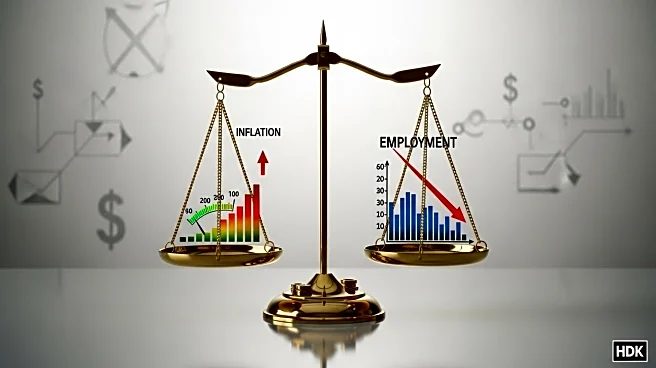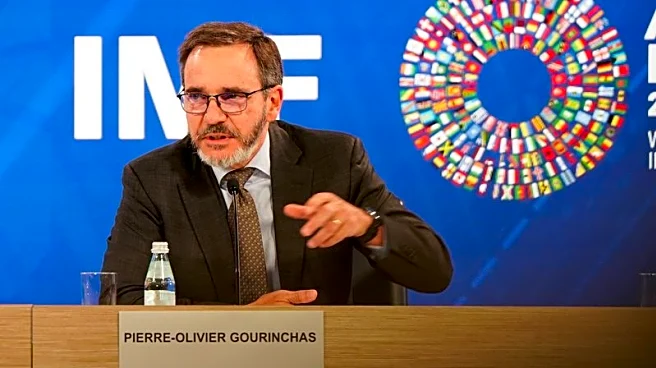What's Happening?
Federal Reserve Governors Stephen Miran and Christopher Waller have expressed differing opinions on the appropriate scale of interest rate cuts ahead of the central bank's upcoming meeting. Miran advocates
for a half-percentage-point reduction, while Waller supports a quarter-point cut, aligning more closely with the consensus within the Federal Open Market Committee (FOMC). This debate comes amid a weakening labor market and geopolitical tensions, with the FOMC expected to make a decision on October 28-29. The ongoing government shutdown has complicated the Fed's decision-making process by delaying key economic data releases, including the consumer price index report.
Why It's Important?
The Federal Reserve's decision on interest rates is crucial for the U.S. economy, impacting borrowing costs for consumers and businesses. A larger cut, as proposed by Miran, could stimulate economic activity by making loans cheaper, potentially offsetting the effects of a softening labor market. However, Waller's more cautious approach aims to prevent rekindling inflationary pressures, which could undermine the progress made in controlling inflation. The outcome of this decision will influence economic growth, employment rates, and inflation, affecting various stakeholders including businesses, investors, and consumers.
What's Next?
The FOMC's decision will depend on the economic data available, particularly regarding the labor market. If the economic outlook worsens, further rate cuts may be considered, potentially up to 1.25 percentage points. Stakeholders will closely monitor upcoming speeches by Fed officials for insights into future monetary policy. The delayed economic data due to the government shutdown adds uncertainty to the Fed's decision-making process, making it challenging to predict the exact course of action.
Beyond the Headlines
The debate over interest rate cuts highlights the Fed's balancing act between stimulating economic growth and controlling inflation. The geopolitical tensions and tariffs imposed by President Trump add complexity to the economic landscape, influencing inflationary pressures. The Fed's approach to these challenges will have long-term implications for monetary policy and economic stability.












